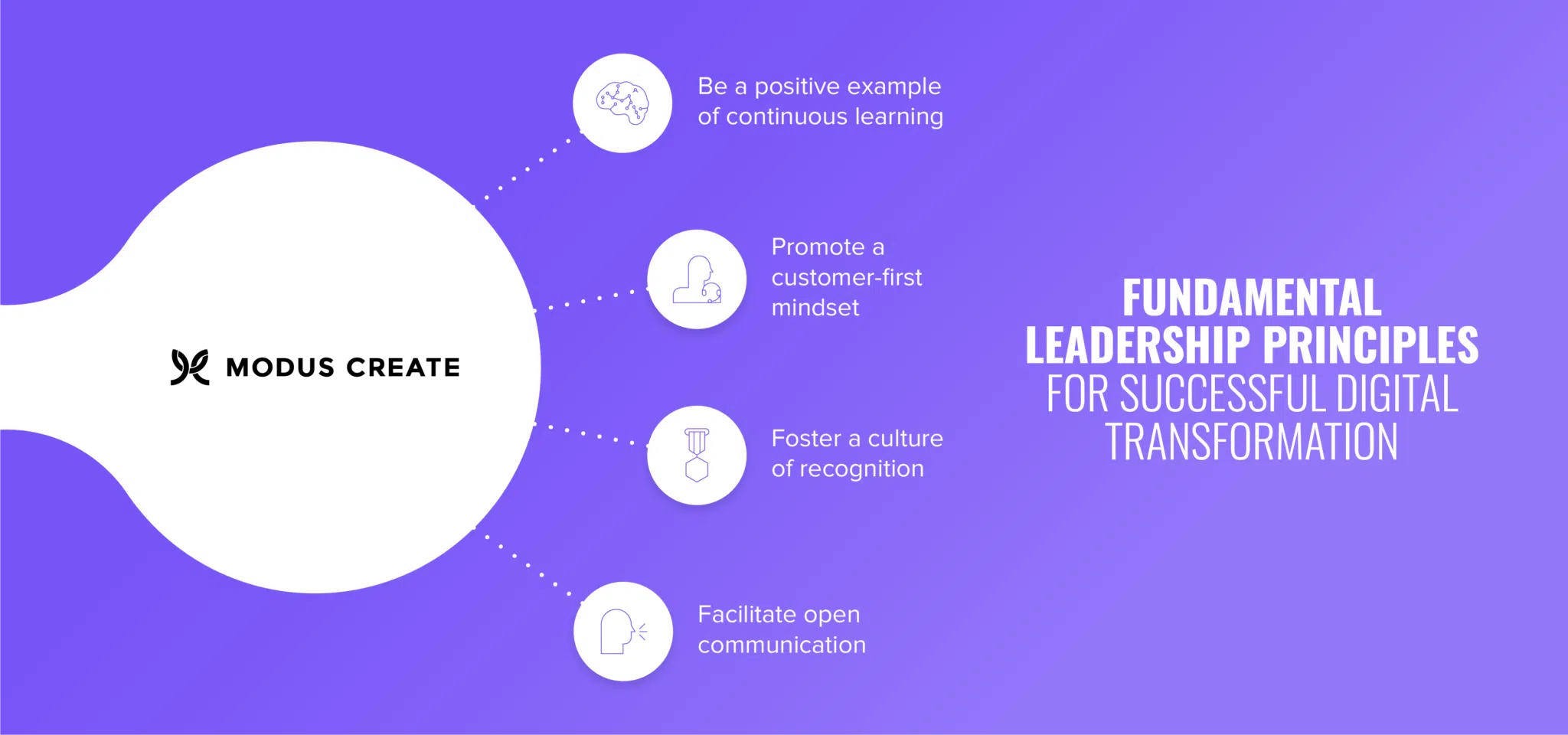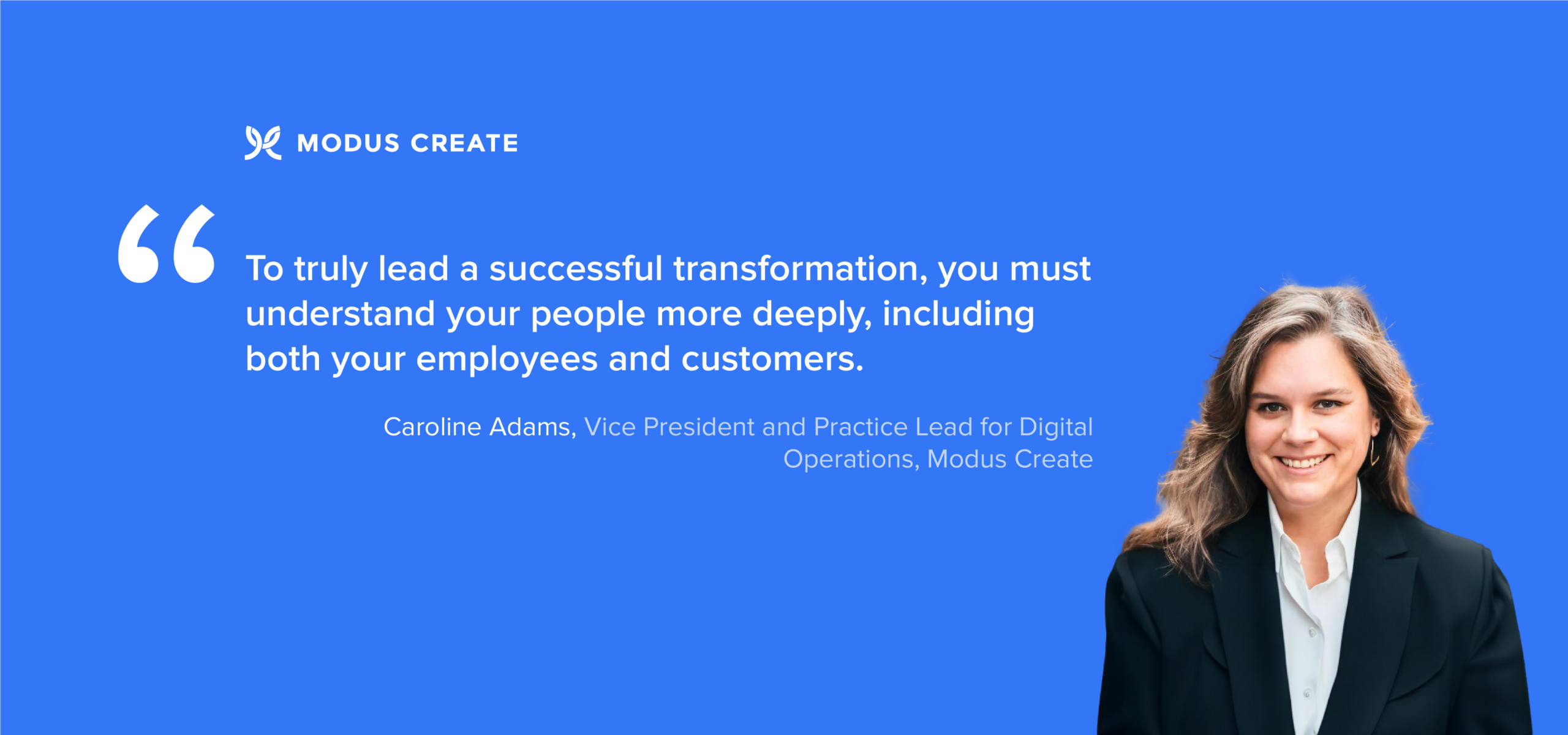How to win friends, influence people, and conquer digital transformation


Table of contents
Subscribe via Email
Subscribe to our blog to get insights sent directly to your inbox.
If you, like me, enjoy working at the intersection of people and technology, I suggest you re-read Dale Carnegie’s timeless classic from 1936, How to Win Friends and Influence People. Why bother with a century-old book in 2026?
Because while the technologies we work with are cutting-edge, the human element of what we do remains as relevant as ever. The core of successful digital transformation is not your technology, it’s your people.
Digital transformation and people skills
I’m not speaking without evidence. According to McKinsey’s survey on digital transformation, organizational transformations succeed with better people strategies. While most organizations recognize that CEO buy-in is an essential part of the transformation journey, with 84% of respondents reporting CEOs are very or somewhat involved, the survey suggests that the most successful transformations also include frontline employees and their managers. Of the transformations that failed to engage either frontline employees or managers, only 3 percent were reported as successful.
Companies with successful digital transformations made more of an effort to communicate. The report states, “A transformation is 5.8 times more likely to be successful at organizations where CEOs communicate a compelling, high-level change story, and 6.3 times likelier when senior leaders share aligned messages about the change effort with the rest of the organization.”
It’s not surprising, is it? Digital transformation requires recalibration, which involves trust and collaboration. Trust and collaboration can’t occur without people. People with hopes, fears, ambitions, and concerns. To truly lead a successful transformation, you must understand your people more deeply, including both your employees and customers. This is where Carnegie’s book comes in. If you are a decision-maker, Carnegie will teach you how to achieve alignment, commitment, and accountability – key ingredients of successful outcome-based digital transformation.
How to Win Friends and Influence People has four parts, and while I will not dive deeply into the details of every principle, I will highlight how they can be applied to your organization.

Digital transformation and Dale Carnegie’s principles
Part 1: Fundamental techniques for dealing with people
Carnegie’s message is simple yet profound: “Become genuinely interested in other people.” This may seem obvious, but it’s easy to get caught up in the technical details and forget the human factor of digital transformation.
When interacting with others, Carnegie encourages us not to complain or criticize, and to give honest and sincere appreciation.
What you can do: Foster a culture of recognition, giving credit where it’s due.
- Acknowledge existing strengths: Before diving into what needs to change, take the time to recognize and appreciate what works, focusing on effective processes and hard-earned achievements. This sets a positive tone and shows respect for the current state.
- Recognize individual contributions: Call out specific team members who have gone above and beyond, demonstrating their value and commitment to transformational change.
- Celebrate small wins: Digital transformation is a marathon, not a sprint. Celebrate milestones and small victories along the way, reinforcing positive behaviors and maintaining momentum.
- Leverage digital tools: Appreciation can take many forms, especially in remote or hybrid workplaces. Use collaboration platforms, emails, video messages, and even social media shout-outs to express gratitude and recognition.
Part 2: Earning respect and admiration
While this part of Carnegie’s book might seem like basic self-help, it packs a wealth of knowledge that can positively impact your organization.
Whether interacting with employees to get them on board for large-scale initiatives or impressing customers, Carnegie reminds us of the fundamentals. He encourages us to smile, remember names, and pay attention to others.
What you can do: Promote a customer-first mindset for your organization, showing employees why it’s important to meet customer needs.
- Dive beneath the surface: Don’t just skim the customer’s website or annual report. Dive deep into their industry, research their competitors, and understand the specific challenges they face.
- Ask insightful questions: Show genuine curiosity about their business, their goals, and their pain points. Ask questions that go beyond the obvious and demonstrate that you’ve done your homework.
- Listen actively: Truly listen to their answers. Pay attention to their verbal and nonverbal cues, and seek to understand their underlying motivations.
- Connect digital transformation to their world: Avoid jargon and buzzwords. Instead, speak their language and show how digital transformation can address their specific needs and aspirations.
Part 3: Winning people over
Carnegie highlights ways to address arguments, how to confront challenges, and why you have to admit your mistakes emphatically.
What you can do: Ensure teams stick to the transformation blueprint to avoid costly mistakes and reach the finish line together.
- Collaborate: Present digital transformation as a joint effort, a journey the entire organization is taking together with the customer. Emphasize that the company and customer are working toward the same goal – the success of their business.
- Seek common ground: People will have varying opinions and concerns about what needs to be done and how to get there. Listen to those perspectives with empathy and respect, even if you don’t agree with them. Focus on areas of agreement and find solutions that address the needs of all stakeholders and create a sense of shared ownership.
- Facilitate open communication: Create a safe space for dialogue where people feel comfortable expressing their thoughts and concerns without fear of judgment or criticism.
- Be a mediator, not a dictator: Instead of pushing your own agenda, guide the conversation, help people understand each other’s perspectives, and facilitate the development of solutions that work for everyone.
Part 4: Leading by example
The principles here might seem straightforward, but Carnegie digs deep into what makes an effective and transformational leader. Being collaborative, empowering, and appreciative – these three qualities, when combined, create a powerful foundation for effective leadership that can inspire and motivate teams to achieve great things, especially in the context of digital transformation.
What you can do:Guide your customers through the complex and often challenging process of transformation by motivating and inspiring them to succeed.
- Start with recognition: Before offering any suggestions or feedback, acknowledge the customer’s willingness to embark on this transformation journey. Recognize their courage to embrace change and their commitment to improving their business.
- Offer constructive feedback: When providing feedback, focus on specific behaviors and outcomes, not on personal attributes. Be honest but also encouraging, highlighting areas of improvement while acknowledging successes.
- Empower the team: Help the customer’s team develop the knowledge and skills they need to drive the transformation forward. Empower them to take ownership of the process and become champions of change.
- Be a positive example: Demonstrate your own enthusiasm and commitment to digital transformation. Be a role model of adaptability, continuous learning, and collaboration.
I encourage you to revisit How to Win Friends and Influence Peoplewith fresh eyes and see how its timeless wisdom can transform your approach to leadership. By mastering the art of winning friends and influencing people in the digital age, you will unlock the full potential of both.


Caroline Adams was the VP and Practice Lead for Digital Operations at Modus Create, where she spearheaded initiatives that intersect People, Process, and Technology. With a passionate focus on the human elements of organizational change, Caroline harmonizes technology with workforce dynamics to drive sustainable growth. She has over 20 years of diverse experience in product management, research & development, sales, operations, and IT.
Related Posts
Discover more insights from our blog.


